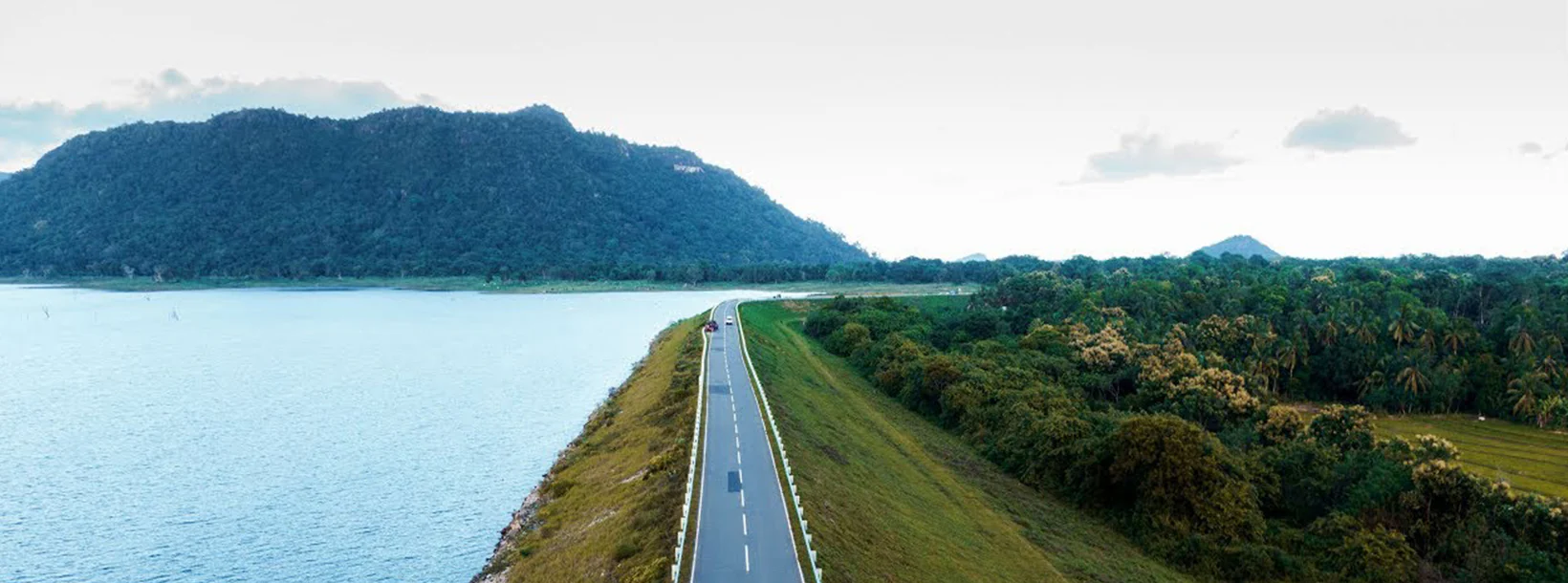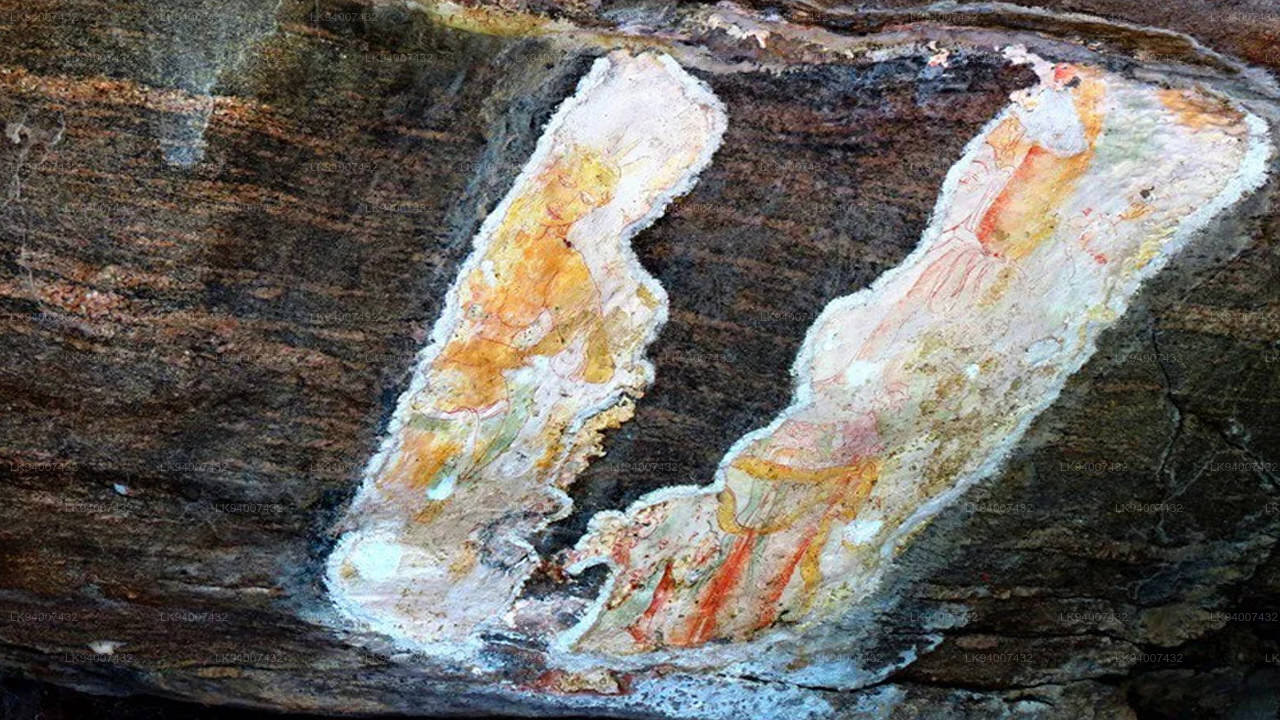
Ampara City
Ampara: District in Sri Lanka's Eastern Province, showcasing diverse landscapes, wildlife sanctuaries, historical sites, and cultural attractions, perfect for exploration and adventure.
Gonagolla Punchi Sigiriya



Eine Reihe von Fresken, die mit den Fresken der antiken Festung Sigiriya identisch sind, befindet sich in einem abgelegenen Tempel in Gonagolla. Dieser Tempel wird wegen der Fresken Punchi Sigiriya genannt.
Dieser Standort befindet sich in der Kotmale-Kanalkolonie in der Divisionssekretariatsabteilung Wewagampattuwa des Distrikts Ampare . Die Kotmale-Kolonie liegt etwa 3 Meilen östlich der Kohombana-Kreuzung an der Straße Ampara – Gonagolla. Zwischen den Felsbrocken befinden sich zwei kleine Höhlen, die in der Antike mit Bildern von Männern und Frauen geschmückt waren.
Heute sind in einer der Höhlen nur noch zwei Fresken erhalten, eine Tänzerin und ein Mann, bemalt mit den Farben Rot, Gelb, Grün und Weiß. Die Tänzerin ist fast identisch mit den Sigiriya-Mädchen, kurvig und wohlgeformt, den Blick gesenkt, die Hände gefaltet und die männliche Figur neben ihr anbetend. Laut Inschriften auf den Felsen stammen diese Fresken aus dem 3. Jahrhundert. Zwei weitere Höhlen im Tempel enthalten Felsinschriften aus dem 3.-4. bzw. 4.-5. Jahrhundert. Zusätzlich zu den Höhlen sind rund um den Höhlentempel von Gonagolla verstreut Überreste eines alten Stupas, Reste eines Watadage und massive Steinsäulen von ehemals großen Gebäuden zu sehen.
About Ampara District
Ampara is belongs to the Eastern Province. of Sri Lanka It is a remote city on the East Coast of Sri Lanka, about 360 km from the capital city of Colombo.Ampara is the largest paddy harvesting province in the country, and has the Indian Ocean on the east coast of Sri Lanka as a fisheries resource. Most of the civilians are Sinhala, while Tamils and Moors also live in the coastal parts of the district.
About Eastern Province
The Eastern Province is one of the 9 provinces of Sri Lanka. The provinces have existed since the 19th century but they didn't have any legal status until 1987 when the 13th Amendment to the 1978 Constitution of Sri Lanka established provincial councils. Between 1988 and 2006 the province was temporarily merged with the Northern Provincee to form the North-East Province. The capital of the province is Trincomalee. The Eastern province's population was 1,460,939 in 2007. The province is the most diverse in Sri Lanka, both ethnically and religiously.
Eastern province has an area of 9,996 square kilometers (3,859.5 sq mi).The province is surrounded by the Northern Province to the north, the Bay of Bengal to the east, the Southern Province to the south, and the Uva, Central and North Central provinces to the west. The province's coast is dominated by lagoons, the largest being Batticaloa lagoon, Kokkilai lagoon, Upaar Lagoon and Ullackalie Lagoon.







